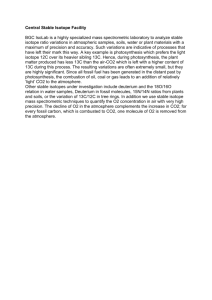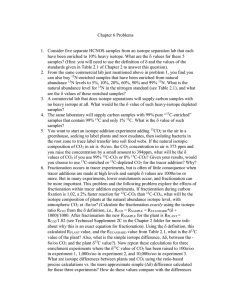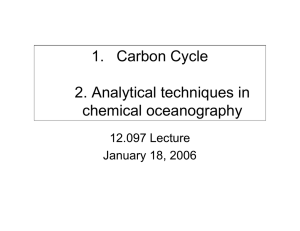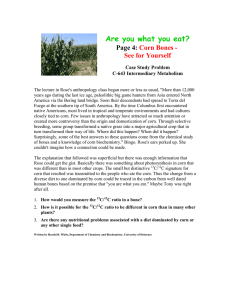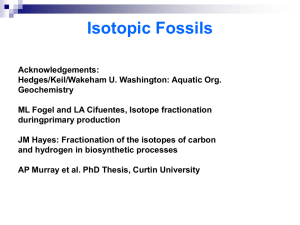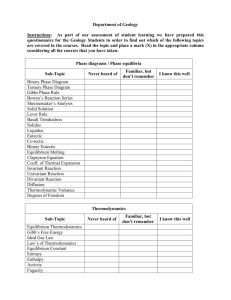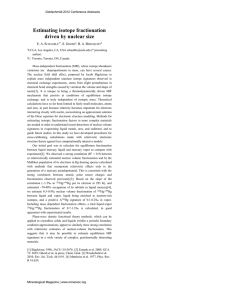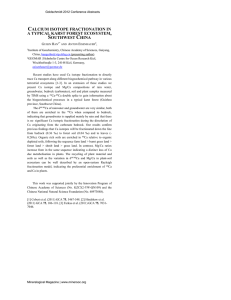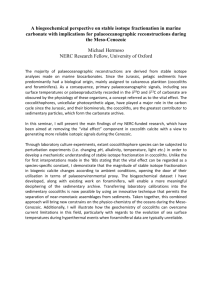Are you what you eat? Page 5: Carbon in the Rocks
advertisement
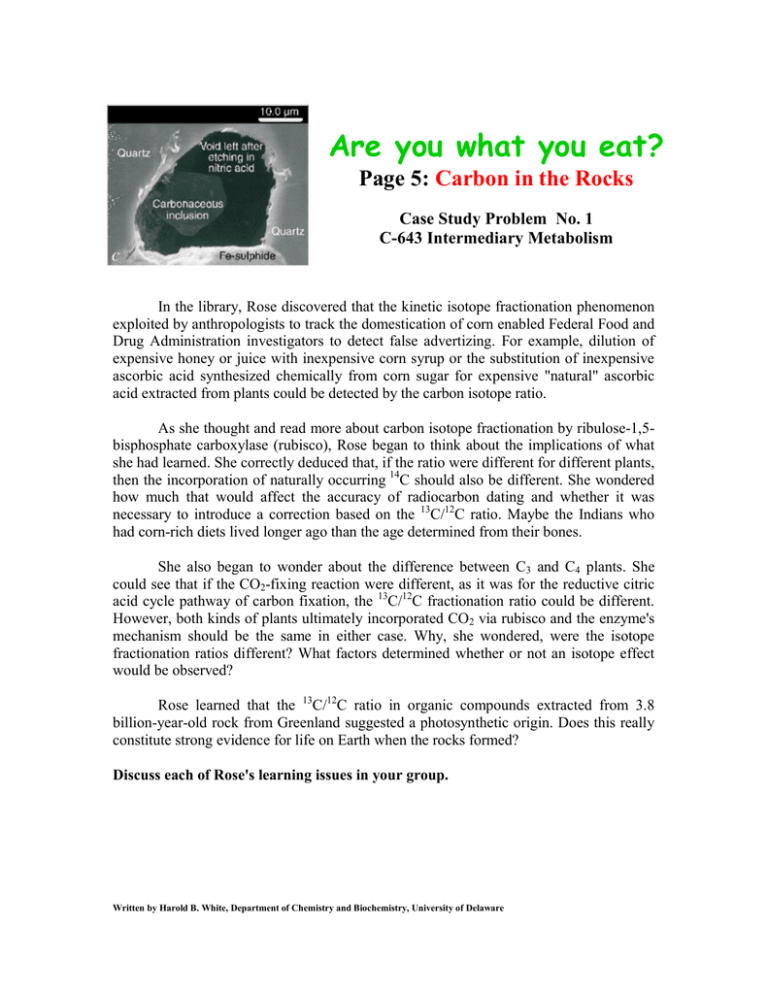
Are you what you eat? Page 5: Carbon in the Rocks Case Study Problem No. 1 C-643 Intermediary Metabolism In the library, Rose discovered that the kinetic isotope fractionation phenomenon exploited by anthropologists to track the domestication of corn enabled Federal Food and Drug Administration investigators to detect false advertizing. For example, dilution of expensive honey or juice with inexpensive corn syrup or the substitution of inexpensive ascorbic acid synthesized chemically from corn sugar for expensive "natural" ascorbic acid extracted from plants could be detected by the carbon isotope ratio. As she thought and read more about carbon isotope fractionation by ribulose-1,5bisphosphate carboxylase (rubisco), Rose began to think about the implications of what she had learned. She correctly deduced that, if the ratio were different for different plants, then the incorporation of naturally occurring 14C should also be different. She wondered how much that would affect the accuracy of radiocarbon dating and whether it was necessary to introduce a correction based on the 13C/12C ratio. Maybe the Indians who had corn-rich diets lived longer ago than the age determined from their bones. She also began to wonder about the difference between C3 and C4 plants. She could see that if the CO2-fixing reaction were different, as it was for the reductive citric acid cycle pathway of carbon fixation, the 13C/12C fractionation ratio could be different. However, both kinds of plants ultimately incorporated CO2 via rubisco and the enzyme's mechanism should be the same in either case. Why, she wondered, were the isotope fractionation ratios different? What factors determined whether or not an isotope effect would be observed? Rose learned that the 13C/12C ratio in organic compounds extracted from 3.8 billion-year-old rock from Greenland suggested a photosynthetic origin. Does this really constitute strong evidence for life on Earth when the rocks formed? Discuss each of Rose's learning issues in your group. Written by Harold B. White, Department of Chemistry and Biochemistry, University of Delaware
